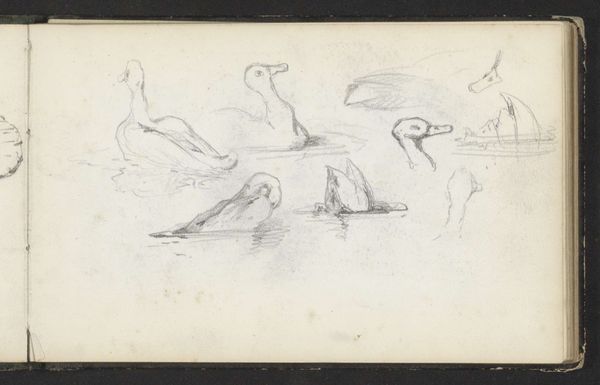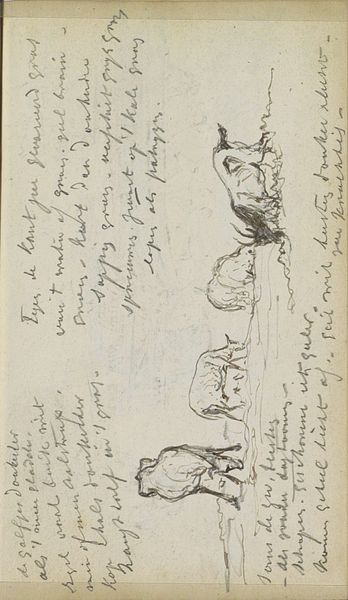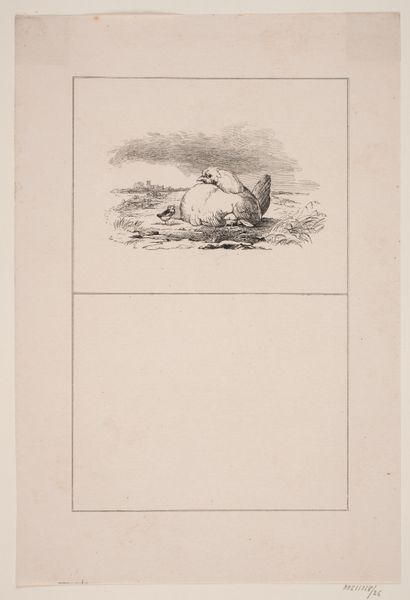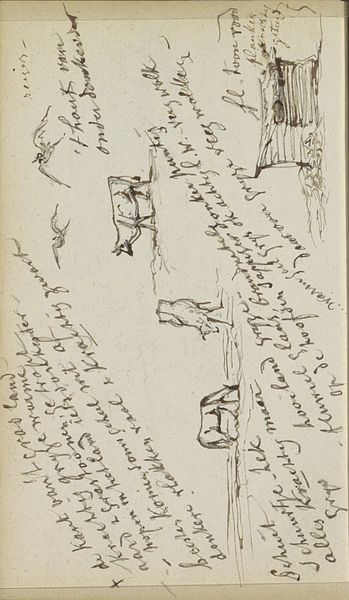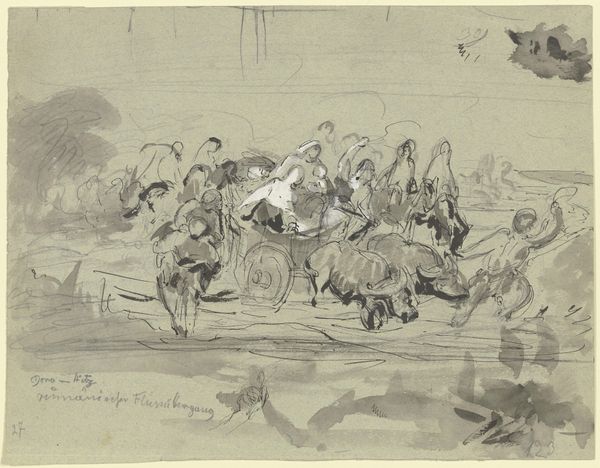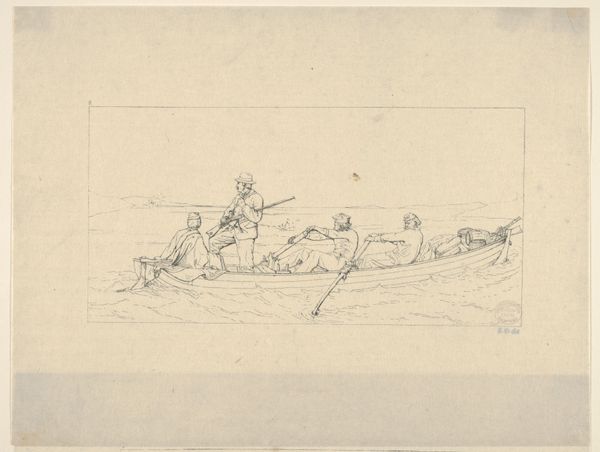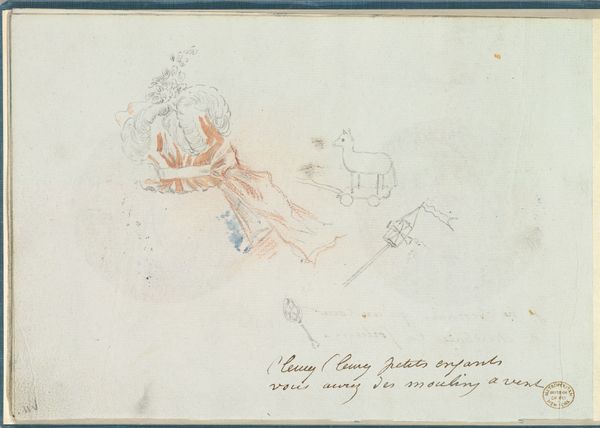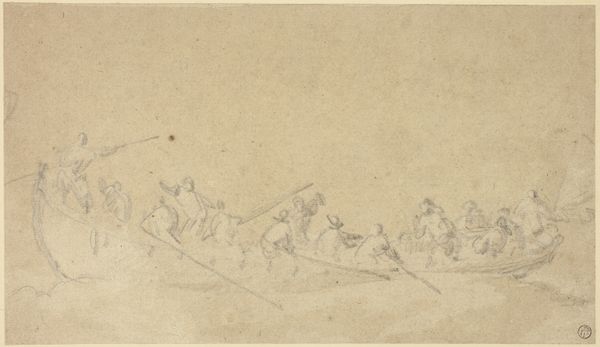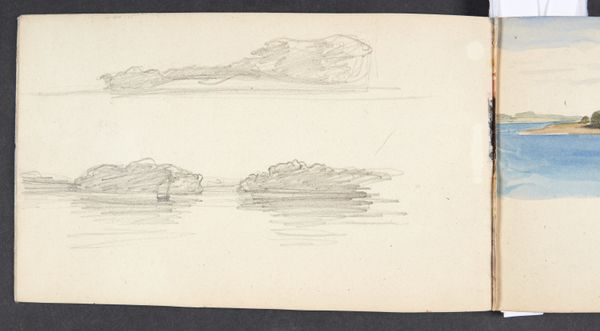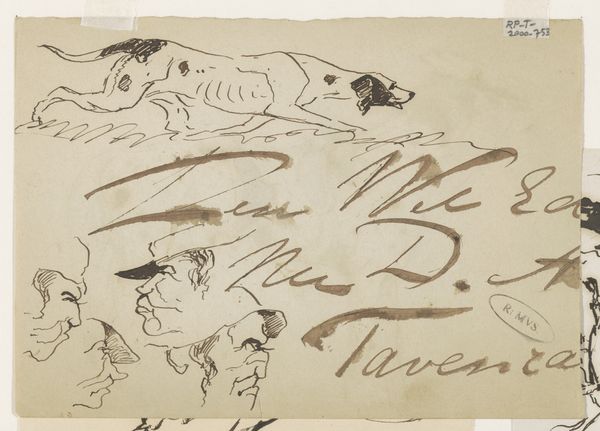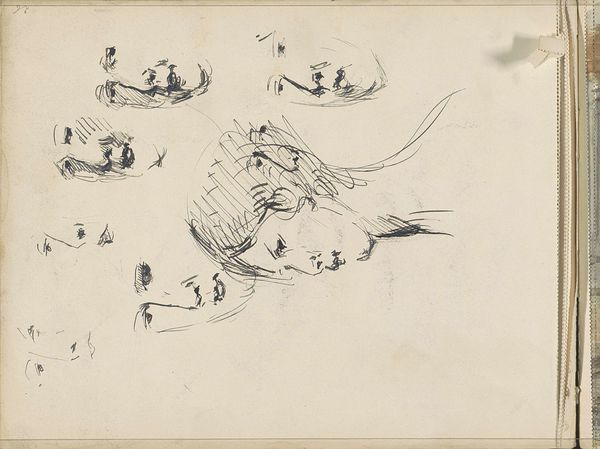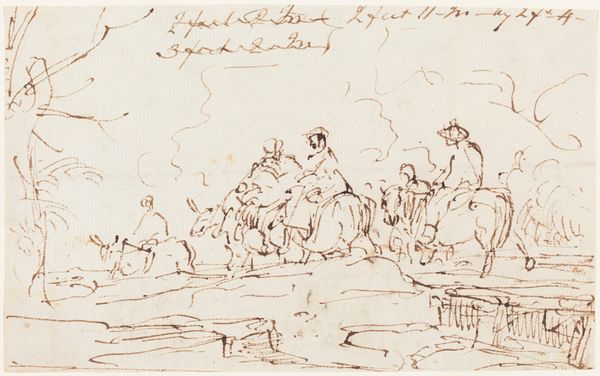
drawing, paper, ink
#
drawing
#
narrative-art
#
pen sketch
#
landscape
#
figuration
#
paper
#
ink
#
line
Dimensions: height 138 mm, width 214 mm
Copyright: Rijks Museum: Open Domain
Editor: Okay, next up we have “Hazenjacht,” possibly from 1872, by Johannes Tavenraat. It’s an ink and pen drawing on paper. The scene depicts a hare hunt and feels very immediate, like a snapshot. There's even writing across the top portion. How do you interpret this work within its historical context? Curator: What’s immediately striking is the casualness of the presentation, almost like a quick memo. The inscription above the hare hunting scene seems unrelated, perhaps even a note reused for a drawing. This hints at a different understanding of art's function then than now. This image invites us to reflect on how such works gained prominence. Did they circulate privately, perhaps as personal correspondence, before entering a public collection like the Rijksmuseum? Editor: That’s interesting. I hadn't considered its journey from a personal sketch to a museum piece. Does the "snapshot" aesthetic relate to the broader art world, or is it a technique favored specifically by the artist? Curator: It speaks to a changing artistic landscape. With increasing social mobility and a growing middle class, art’s role shifted from solely serving elite patrons or religious institutions. Did sketches like these offer an accessible, relatable vision for a broader public hungry for depictions of everyday life, reflecting the contemporary appeal for genre paintings of bustling market squares, or domestic scenes? Editor: I see. So it reflects larger societal changes, bringing everyday narratives to the forefront, in accessible sketches for the enjoyment of the upwardly-mobile merchant class. I’ll definitely look at the museum's collection with a fresh eye. Curator: Indeed! Art constantly reflects, and also shapes our understanding of social values and aspirations. Considering those questions helps us critically assess how we assign value to artworks today.
Comments
No comments
Be the first to comment and join the conversation on the ultimate creative platform.

